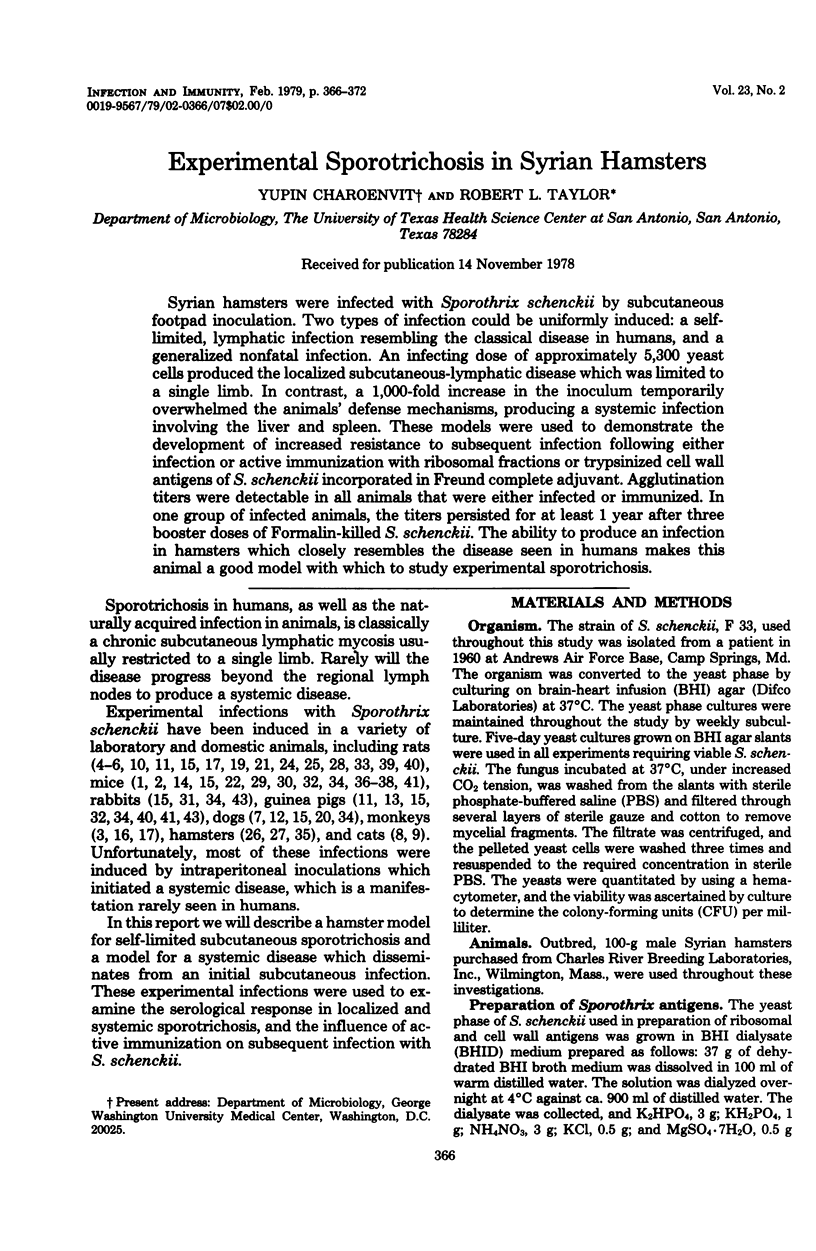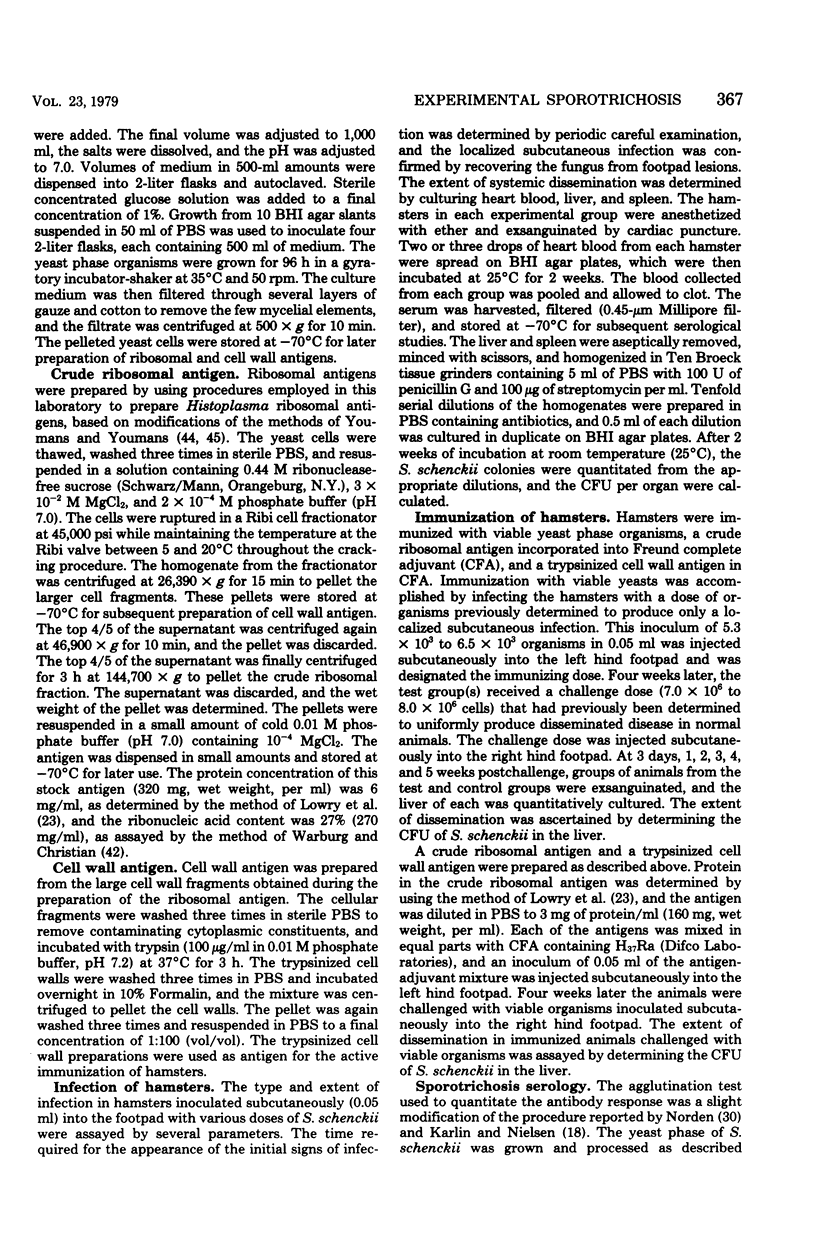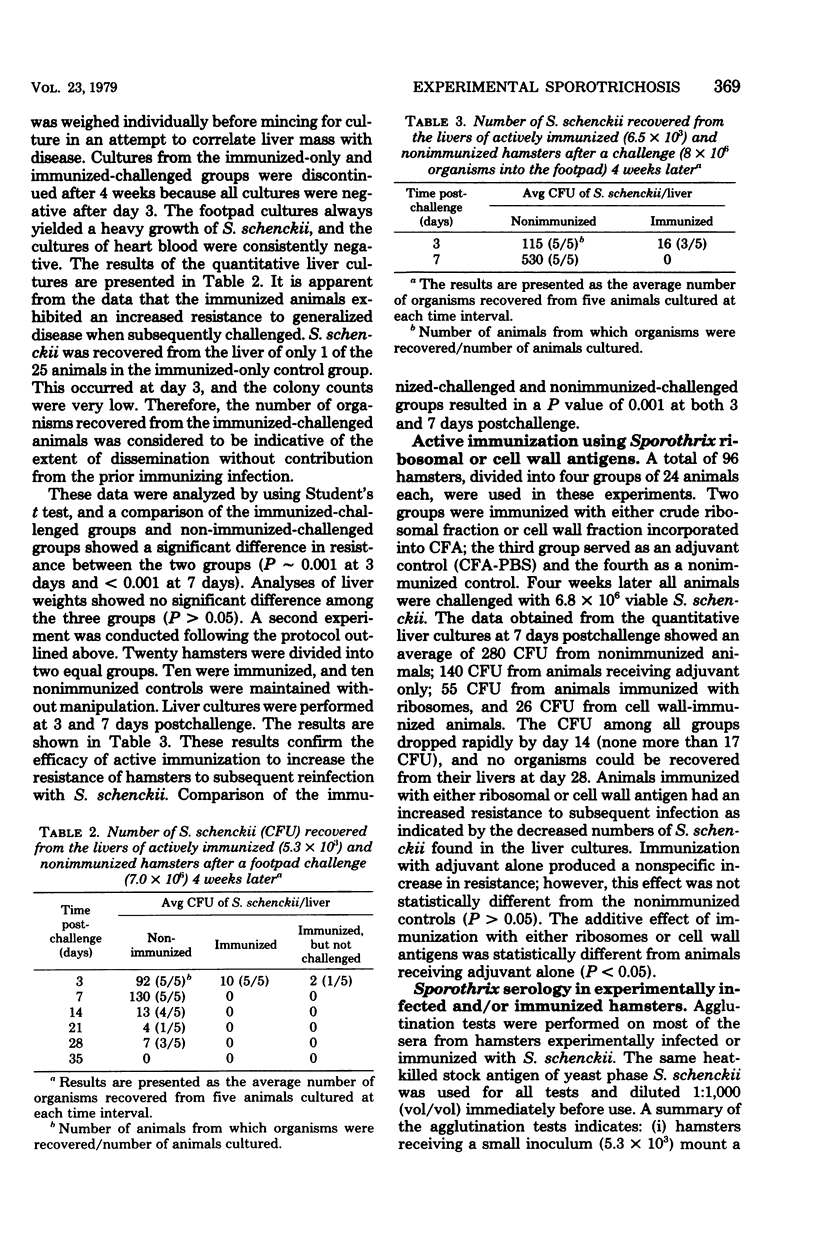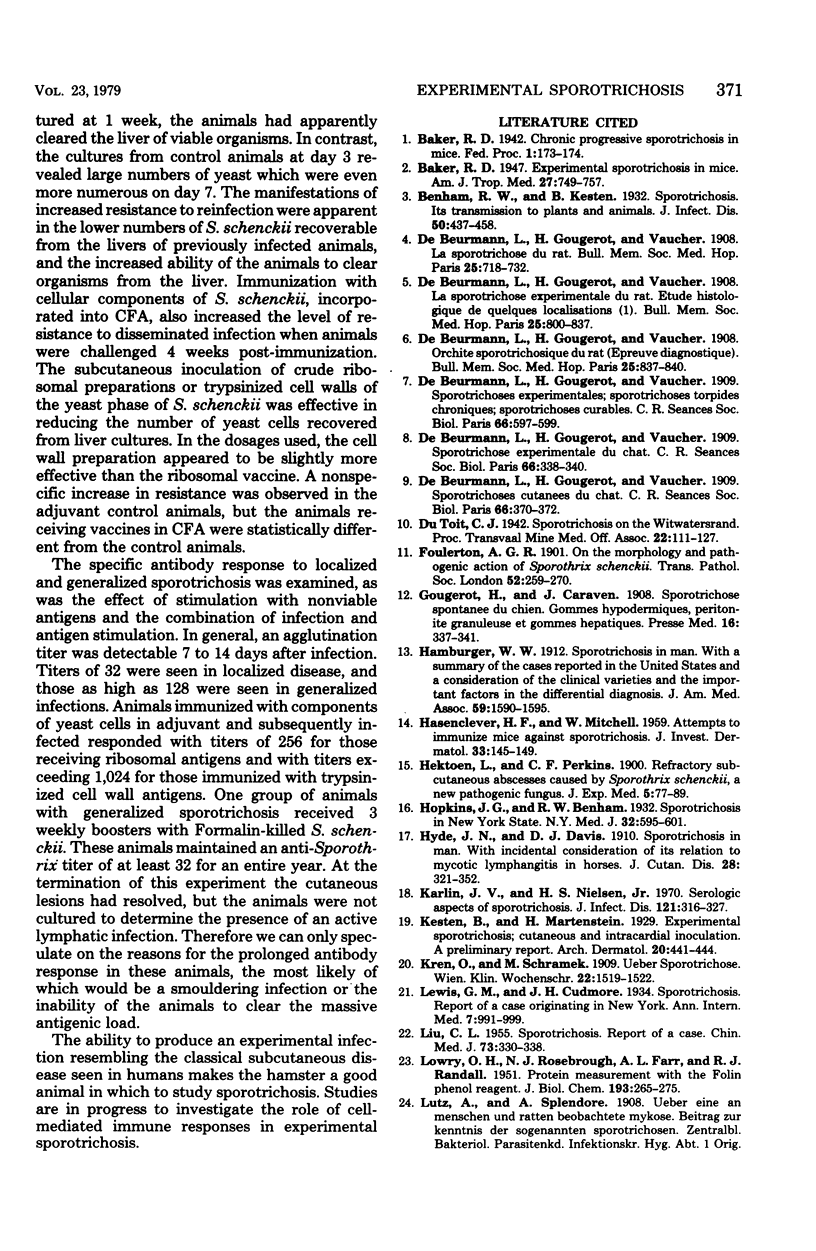Abstract
Syrian hamsters were infected with Sporothrix schenckii by subcutaneous footpad inoculation. Two types of infection could be uniformly induced: a self-limited, lymphatic infection resembling the classical disease in humans, and a generalized nonfatal infection. An infecting dose of approximately 5,300 yeast cells produced the localized subcutaneous-lymphatic disease which was limited to a single limb. In contrast, a 1,000-fold increase in the inoculum temporarily overwhelmed the animals' defense mechanisms, producing a systemic infection involving the liver and spleen. These models were used to demonstrate the development of increased resistance to subsequent infection following either infection or active immunization with ribosomal fractions or trypsinized cell wall antigens of S. schenckii incorporated in Freund complete adjuvant. Agglutination titers were detectable in all animals that were either infected or immunized. In one group of infected animals, the titers persisted for at least 1 year after three booster doses of Formalin-killed S. schenckii. The ability to produce an infection in hamsters which closely resembles the disease seen in humans makes the animal a good model with which to study experimental sporotrichosis.
Full text
PDF






Selected References
These references are in PubMed. This may not be the complete list of references from this article.
- HASENCLEVER H. F., MITCHELL W. Attempts to immunize mice against sporotrichosis. J Invest Dermatol. 1959 Sep;33:145–149. doi: 10.1038/jid.1959.134. [DOI] [PubMed] [Google Scholar]
- Karlin J. V., Nielsen H. S., Jr Serologic aspects of sporotrichosis. J Infect Dis. 1970 Mar;121(3):316–327. doi: 10.1093/infdis/121.3.316. [DOI] [PubMed] [Google Scholar]
- LIU C. L. Sporotrichosis; report of a case. Chin Med J. 1955 Jul-Aug;73(4):330–338. [PubMed] [Google Scholar]
- LOWRY O. H., ROSEBROUGH N. J., FARR A. L., RANDALL R. J. Protein measurement with the Folin phenol reagent. J Biol Chem. 1951 Nov;193(1):265–275. [PubMed] [Google Scholar]
- MARIAT F., DROUHET E. Sporotrichose expérimentale du hamster; observation de formes astéroïdes de Sporotrichum. Ann Inst Pasteur (Paris) 1954 Apr;86(4):485–492. [PubMed] [Google Scholar]
- NORDEN A. Sporotrichosis; clinical and laboratory features and a serologic study in experimental animals and humans. Acta Pathol Microbiol Scand Suppl. 1951;89:1–119. [PubMed] [Google Scholar]
- Sethi K. K. Attempts to produce experimental intestinal cryptococcosis and sporotrichosis. Mycopathol Mycol Appl. 1967 Apr 28;31(3):245–250. doi: 10.1007/BF02053421. [DOI] [PubMed] [Google Scholar]
- Sethi K. K. Experimental sporotrichosis in the normal and modified host. Sabouraudia. 1972 Mar;10(1):66–73. doi: 10.1080/00362177285190141. [DOI] [PubMed] [Google Scholar]
- Sethi K. K., Kneipp V. L., Schwarz J. Pulmonary sporotrichosis in mice following intranasal infection. Am Rev Respir Dis. 1966 Mar;93(3):463–464. doi: 10.1164/arrd.1966.93.3P1.463. [DOI] [PubMed] [Google Scholar]
- Sethi K. K., Schwarz J. Experimental cutaneous sporotrichosis. Mykosen. 1965 Oct 1;8(4):128–135. doi: 10.1111/j.1439-0507.1965.tb01146.x. [DOI] [PubMed] [Google Scholar]
- YOUMANS A. S., YOUMANS G. P. EFFECT OF MITOCHONDRIAL STABILIZERS ON THE IMMUNOGENICITY OF THE PARTICULATE FRACTION ISOLATED FROM MYCOBACTERIUM TUBERCULOSIS. J Bacteriol. 1964 Jun;87:1346–1354. doi: 10.1128/jb.87.6.1346-1354.1964. [DOI] [PMC free article] [PubMed] [Google Scholar]
- Youmans A. S., Youmans G. P. Factors affecting immunogenic activity of mycobacterial ribosomal and ribonucleic acid preparations. J Bacteriol. 1969 Jul;99(1):42–50. doi: 10.1128/jb.99.1.42-50.1969. [DOI] [PMC free article] [PubMed] [Google Scholar]


